The battlecruiser did not spring fully-formed from the mind of Jackie Fisher. In fact, Invincible was very much in the mold of armored cruisers that had gone before her, although the incorporation of the logic of Dreadnought into her design has often obscured this.
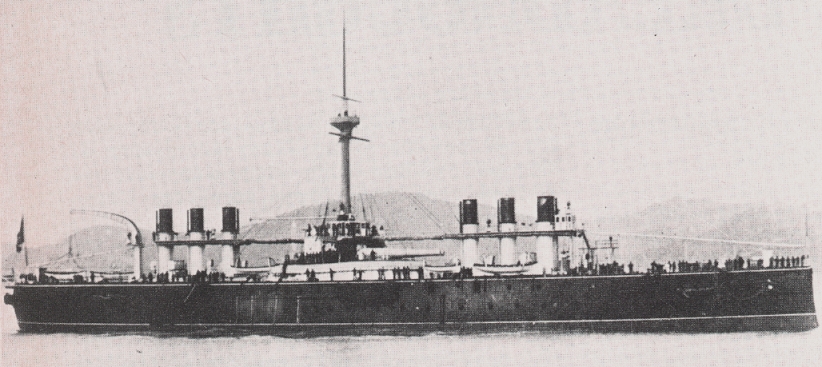
Italia
It's worth taking a closer look at the predecessors to the battlecruiser, which we can broadly define as fast ships of battleship size, designed to be capable of standing in the line of battle and of raiding or protecting commerce. It could even be argued that Warrior herself meets this definition, designed for 13.5 kts at a time when 10 or 11 was standard, although the trends become more obvious after the demise of sails in the mid-1870s. The first vessels that are clearly in the battlecruiser mold are the Italian Italia and Lepanto, by far the largest (13,700 tons) and fastest (17.5 kts) ironclads of the day and armed with massive 17" guns, but protected only by an armored deck, as used on contemporary protected cruisers. This proved a major liability when the QF gun entered service a few years later, as their sides would easily be riddled by such weapons.
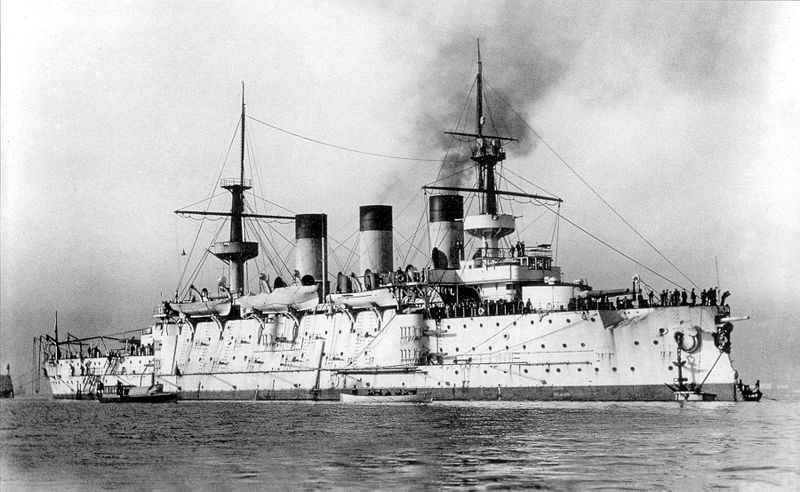
Peresvet
Despite this, the Italians persevered, with the Re Umberto class being capable of 20 kts despite being designed around the same time as HMS Victoria. Other nations tended to focus their quasi-battlecruisers into one of two categories. Either they were station ships, designed to operate in overseas and deal with the lighter ironclads that might be found in such areas, or they were for commerce warfare, either ships designed to hunt down merchant vessels, or ships to chase down and destroy the raiders. These in particular tended to be very large, as they required both high speed and great endurance, sacrificing armor to get it. Exemplars of this type are the Russian cruisers Rurik and Rossiya and the British Powerful class. Typical of the other type were ships like Centurion, Renown and, slightly later, the Russian Presvets, which were even referred to as "battleship-crusiers" in many of the design documents. These ships did have some commerce-warfare functionality, intended to be capable of dealing with either raiders or their own opposite numbers, but they were not designed with such high speeds. What they did have was heavier guns, including battleship-grade armaments, although often 10" instead of 12".
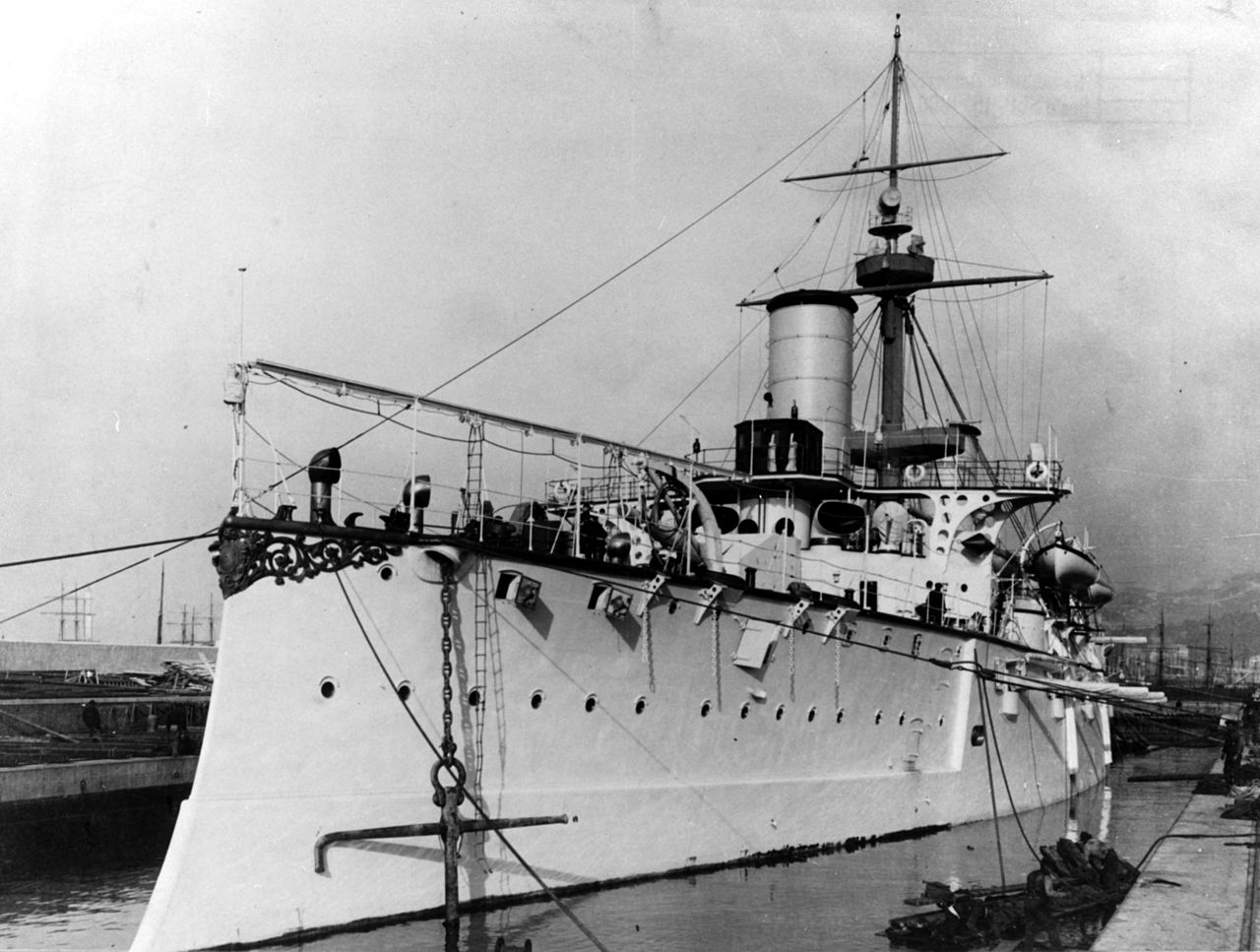
ARA Garibaldi
This began to change in the early 1890s, as raiders began to shrink and the development of better armor allowed effective protection against QF guns. Two powers were quick to take advantage of this, both relative outsiders: the ubiquitous Italians and the rising United States. Italy got innovative in the face of a major fiscal crisis, designing armored cruisers of 6,840 tons which in theory had reasonable armor against QF guns and main batteries of 2 10" or 4 8" weapons, along with 6" QFs. These ships certainly looked impressive enough, producing immediate popularity on the export market. The lead ship, Giuseppe Garibaldi, was laid down in 1893, but sold to Argentina after her launch two years later, and replaced on the slip by another vessel of the same name, subsequently sold to Spain as Cristobal Colon. A third Garibaldi was also sold to Argentina, before the fourth finally entered Italian service in 1901, having been considerably stretched while under construction. Three other units of the class were built, one of which was also sold to Argentina, making the Garibaldi class one of the very rare cases where the majority of ships in a multi-ship class had the same name.
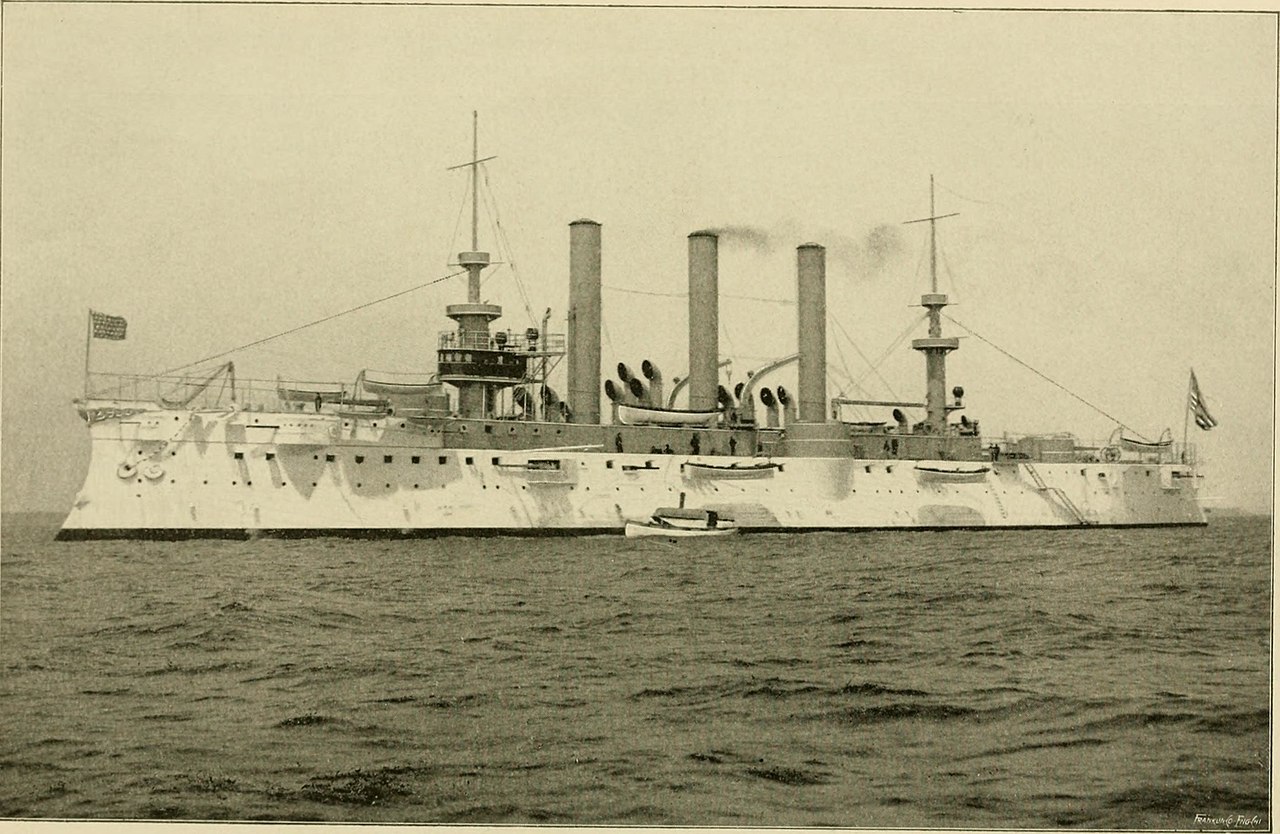
USS Brooklyn
The story of the American proto-battlecruisers is somewhat more straightforward. During the early years of the transition from commerce raiding to the battlefleet, two armored cruisers were ordered, New York1 and Brooklyn, armed with main batteries of 8" guns and secondary batteries of 4" and 5" QF guns respectively. These ships were intended to support the battle fleet that the USN had started building, capable of high speed, armament that would give a chance against a battleship, armor capable of dealing with most QF guns and the endurance necessary for their secondary role as commerce raiders. These ships served as equals to the early American battleships during the war with Spain.
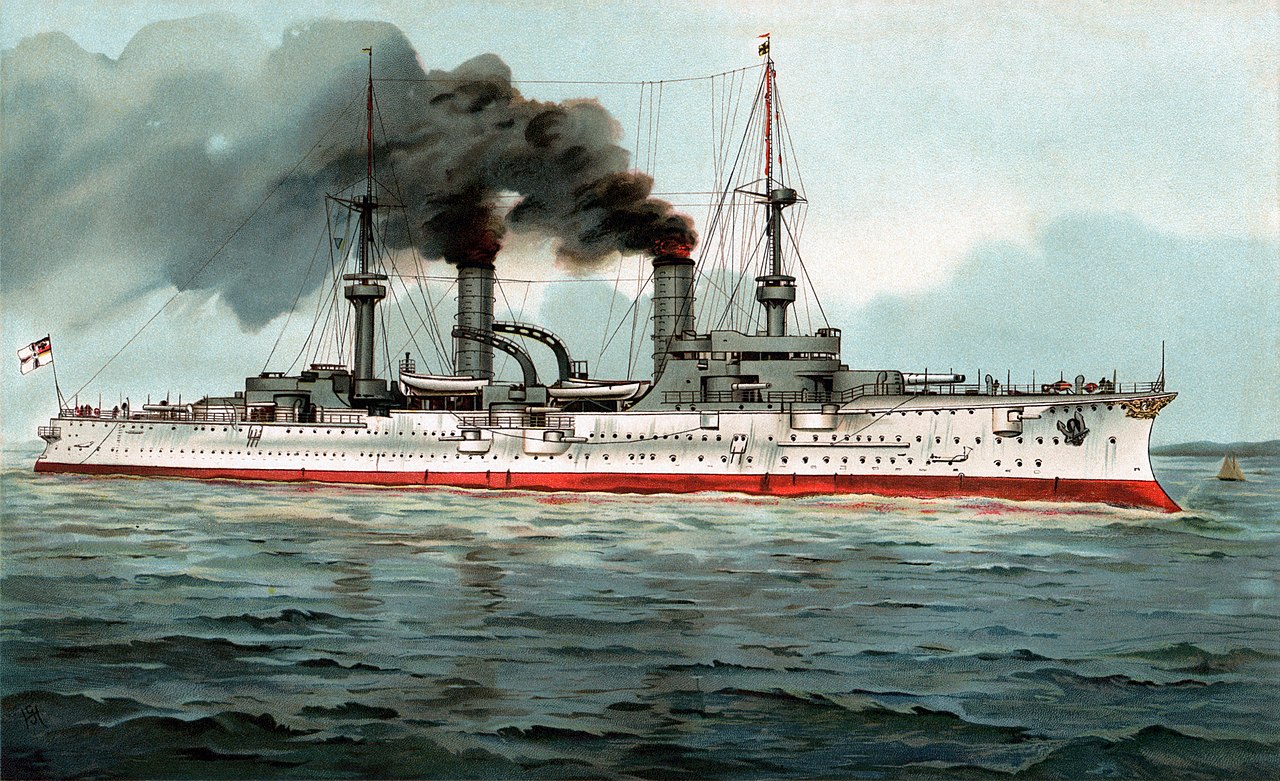
SMS Furst Bismarck
After 1895, other nations began to adopt the type. A notable example was the German Furst Bismarck, which was equipped with the same armament as the contemporary Kaiser Friedrich III class battleships, but with lighter armor. This was unique, as the vast majority of the proto-battlecruisers tended to concentrate their sacrifices in armament, particularly heavy armament, instead of armor. Germany providing the exception is particularly notable as their later battlecruisers would be unusually well-armored and poorly-armed relative to the British. The French also began to build large armored cruisers, although the exact logic behind this decision remains unclear.
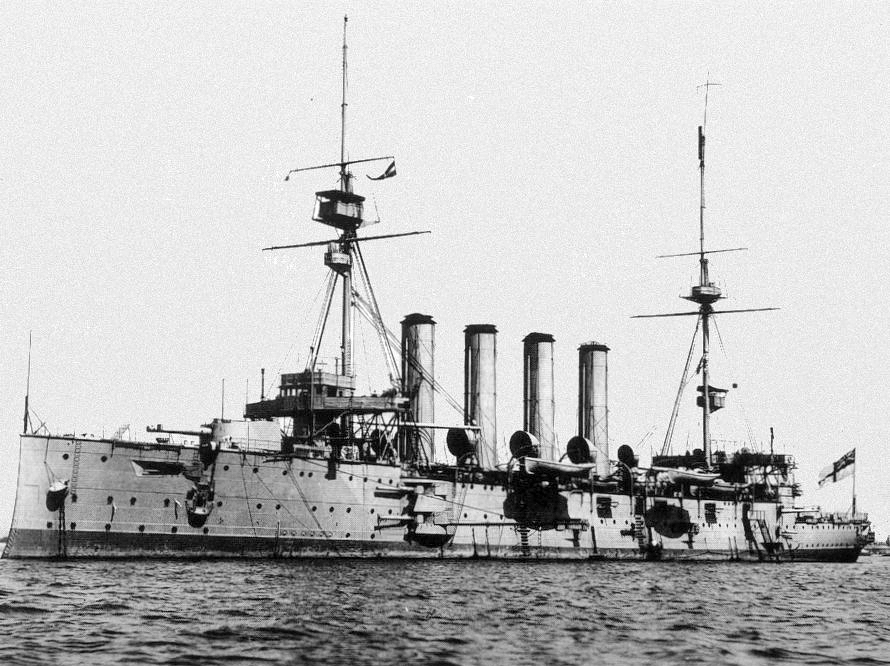
HMS Cressy
In Britain, Director of Naval Construction William White had recently developed a new and quite light protective scheme for the Canopus class battleships, which themselves were the last of the station battleships, falling outside the battlecruiser lineage primarily because of their speed. The development of Krupp Armor meant that the 6" belts of these ships were able to protect very effectively against 6" QF guns, and worked with their armored belts to keep even heavy-caliber shells out of the vitals. This arrangement opened the possibility of a cruiser that could function effectively as the fast wing of the battlefleet, protected against battleship shells and armed primarily with the QF gun battery which was increasingly seen as the main armament even of the battleships. The result was the Cressy class, a 21-kt version of Canopus that replaced the 4x12" big guns with 2x9.2" weapons. A sure sign of their intended role was the choice of endurance, which was to match the battleships they were to operate with.
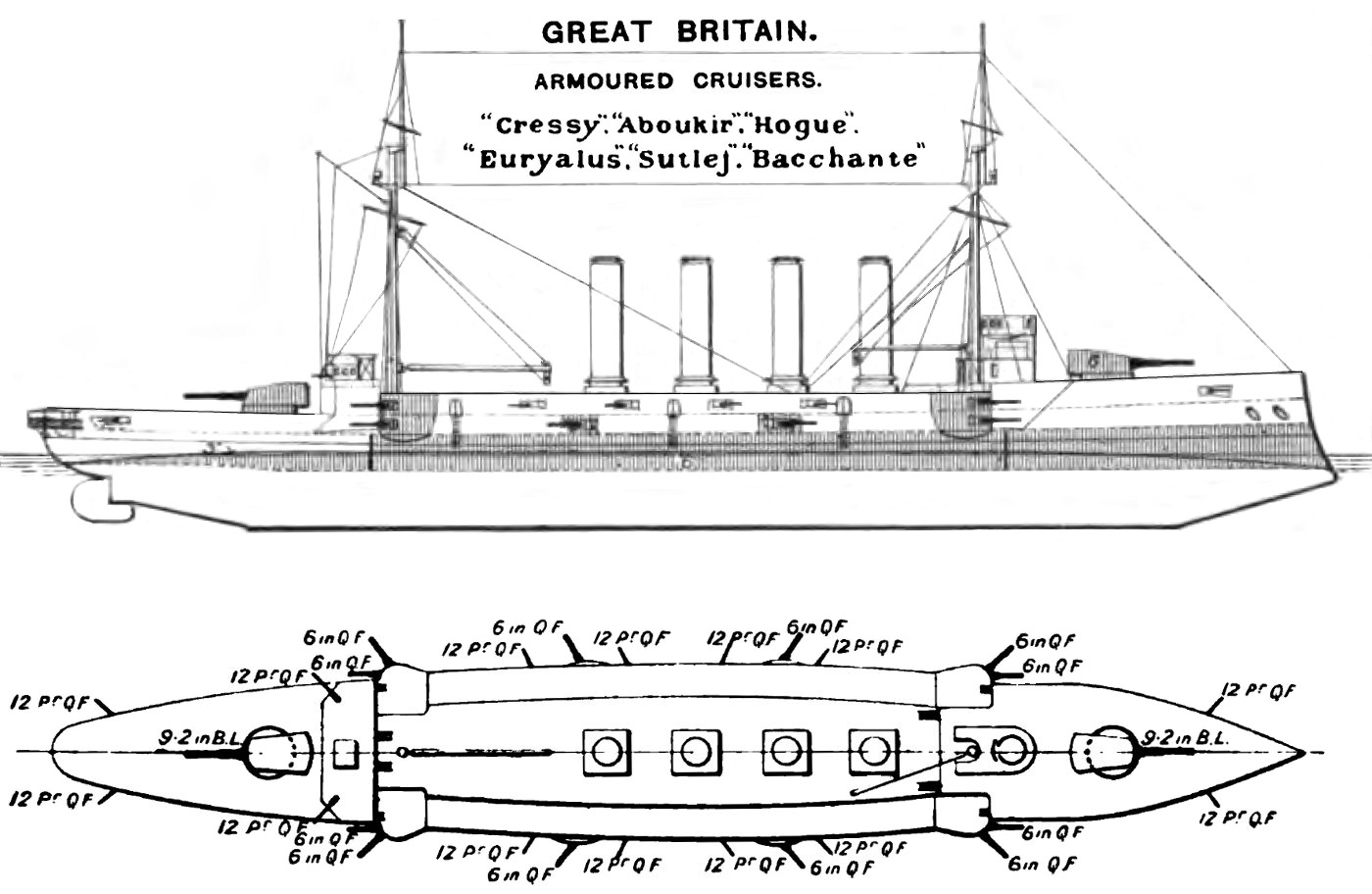
In many ways, the Cressys are the first true battlecruisers. The stark difference in armament from Invincible obscures this, but this is a direct result of the same development in armament and fire control that gave us Dreadnought. Both ships were built around the primary armament of their battleship contemporaries, trading off secondary characteristics, heavy guns for Cressy and armor for Invincible, to get high speed. Cressy was followed by several further classes, all with the same amount of armor, but more speed and, in later ships, an armament that was a mix of 9.2" and 7.5" guns. Construction continued right up until Invincible and her sisters, who were themselves classified as armored cruisers until 1913.
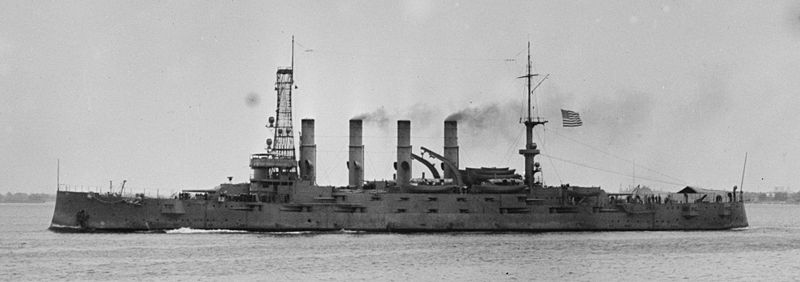
USS Montana of the Tennessee class
Nor were the British alone in building ships of this type. The performance of New York and Brooklyn during the Spanish-American War had convinced the USN that it needed more armored cruisers, and it proceeded to build 10 ships of this type, displacing only 1000 tons less than the contemporary battleships, and armored similarly to the Cressys. As such, they effectively displaced battleships from the program, and the USN recognized their status by giving them state names, required by law for battleships. The British concurred, classifying them as fast battleships rather than as cruisers. These vessels were to form the fast wing of the US battle fleet into the middle of WWI, and their replacement by dreadnought battlecruisers was thwarted by the Washington Naval Treaty.2
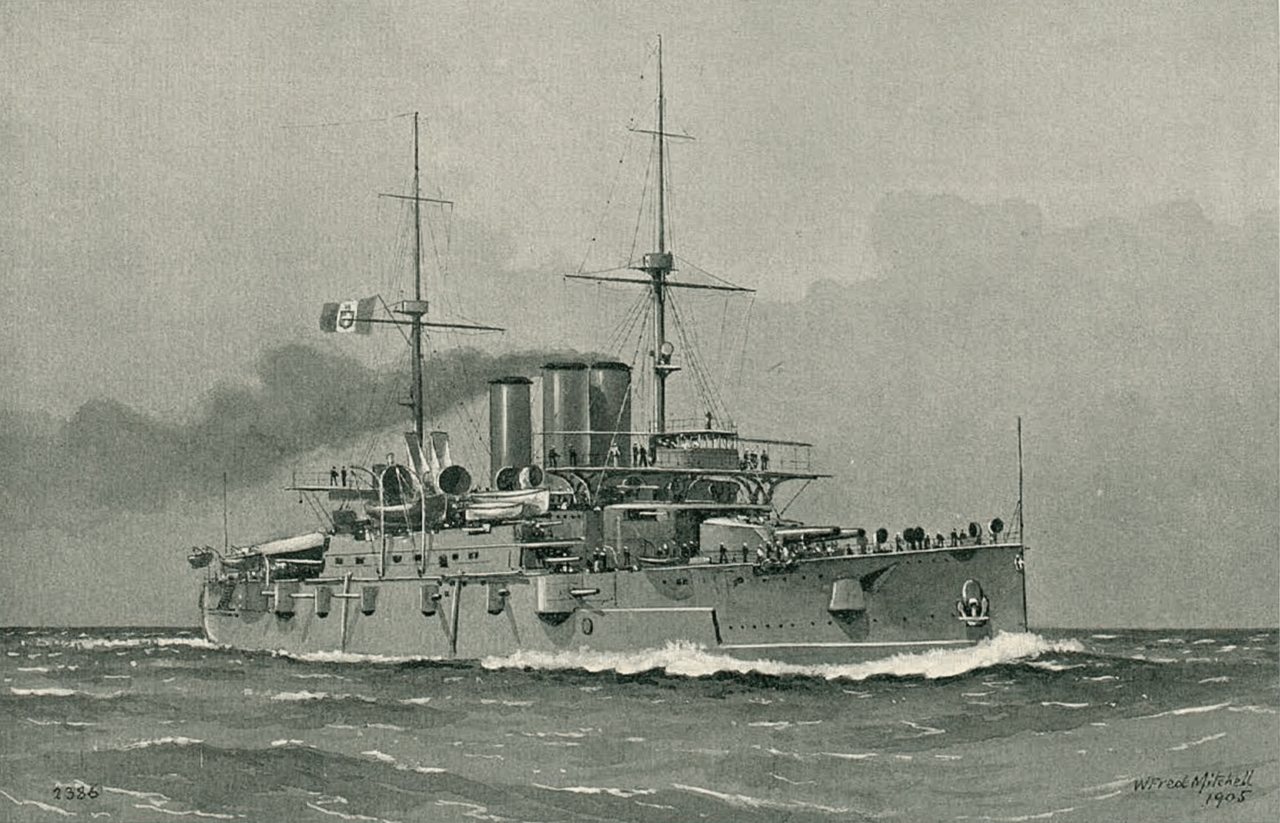
Regina Margherita
Outside the Anglophone nations, the French continued to build armored cruisers of their own, but the logic behind this decision appears to be unclear. The Germans had likewise continued a program of their own, with the Scharnhorst class intended to be able to substitute for a damaged battleship in the line of battle, and the later Blucher having an all-8.2" armament to counter what they expected out of Invincible. The Italians produced the Regina Margherita and Regina Elena classes, both high-speed vessels with battleship-caliber armament, but no bigger than many of the armored cruisers of the era, and with fairly lightly armor. And the Japanese produced two classes of ships, the Tsukubas and the Ibukis, which were armed with 4 12" guns each, as were the contemporary pre-dreadnoughts, and which they later classified as battlecruisers when that term reached Japan.
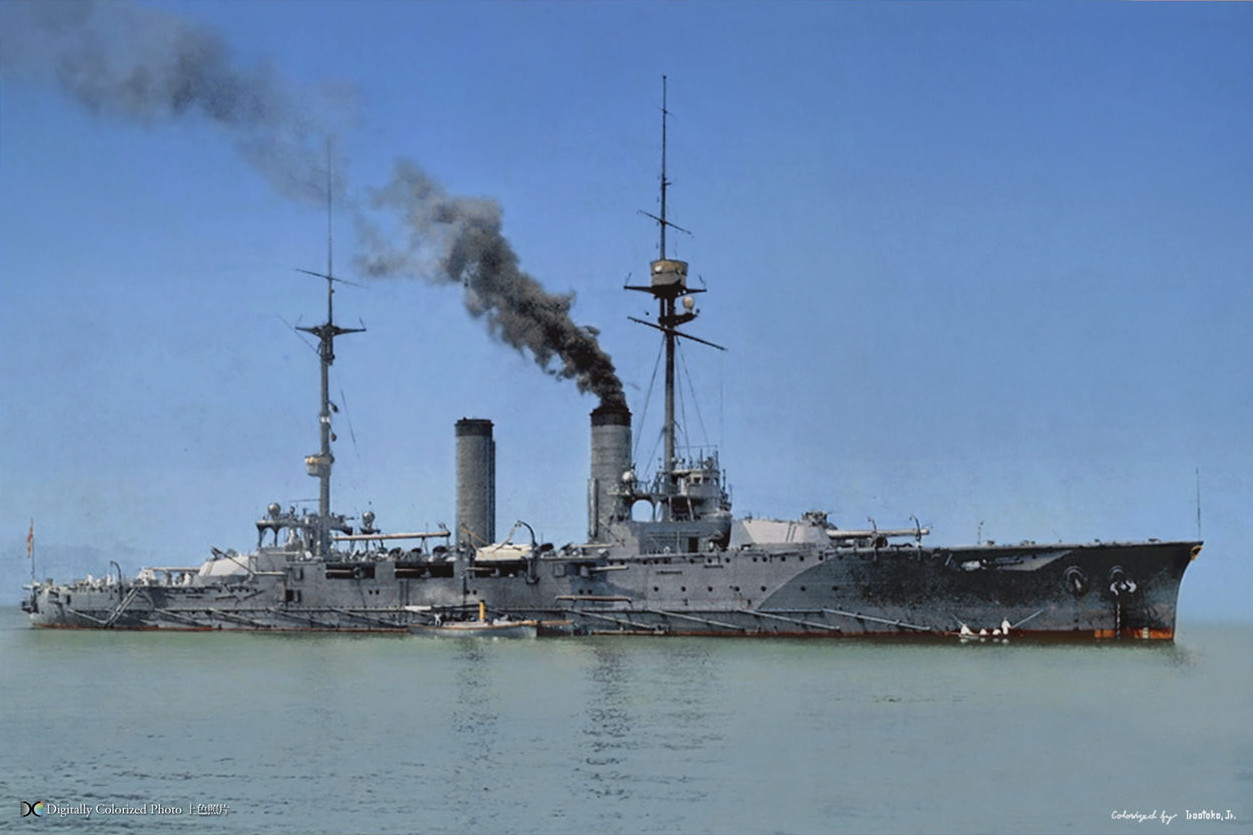
Tsukuba
To explore this lineage more, I've prepared a table of various ships, sorted by country and the year they were laid down. The first line in each is the standard British battleship closest to the start year. I've tried to keep it simple, as a proper description of each ship would be phenomenally complex, but this still gives a good overview of the evolution of the type.
1890
| Class | Nation | Tonnage | Speed | Belt | Armament |
|---|---|---|---|---|---|
| Royal Sovereign | UK | 14150 | 17.5 | 18" | 4x13.5" 10x6" |
| Re Umberto | Ita | 13600 | 20 | 4" | 4x13.5" 8x6" |
| Giuseppe Garibaldi | Ita | 6750 | 20 | 6" | 2x10" 10x6" |
| Rurik | Rus | 11690 | 18 | 10" | 4x8" 16x6" |
| Rossia | Rus | 13675 | 20 | 8" | 4x8" 16x6" |
| Centurion | UK | 10500 | 18.5 | 12" | 4x10" 10x4.7" |
| Renown | UK | 12350 | 18 | 8" | 4x13.5" 10x6" |
| Powerful | UK | 14200 | 22 | N/A3 | 2x9.2" 12x6" |
| New York | US | 8200 | 20 | 4" | 6x8" 12x4" |
| Brooklyn | US | 9215 | 20 | 3" | 8x8" 12x5" |
1895
| Class | Nation | Tonnage | Speed | Belt | Armament |
|---|---|---|---|---|---|
| Majestic | UK | 14560 | 17 | 9" | 4x12" 12x6" |
| Jeanne d'Arc | Fra | 11270 | 21.8 | 6" | 2x7.6" 14x5.5" |
| Gloire | Fra | 10236 | 22 | 6" | 2x7.6" 8x6.5" |
| Furst Bismarck | Ger | 10700 | 19 | 8" | 4x9.4" 12x5.9" |
| Regina Margherita | Ita | 13215 | 20 | 6" | 4x12" 4x8" 12x6" |
| Peresvet | Rus | 13810 | 18 | 9" | 4x10" 11x6" |
| Gromoboi | Rus | 12455 | 19 | 6" | 4x8" 16x6" |
| Canopus | UK | 14300 | 18 | 6" | 4x12" 12x6" |
| Diadem | UK | 11000 | 20 | N/A | 16x6" |
| Cressy | UK | 12000 | 21 | 6" | 2x9.2" 12x6" |
| Drake | UK | 14150 | 23 | 6" | 2x9.2" 16x6" |
1900
| Class | Nation | Tonnage | Speed | Belt | Armament |
|---|---|---|---|---|---|
| London | UK | 14500 | 18 | 9" | 4x12" 12x6" |
| Leon Gambetta | Fra | 12550 | 22 | 6" | 4x7.6" 16x6.5" |
| Jules Michelet | Fra | 12600 | 23 | 6" | 4x7.6" 12x6.5" |
| Ernest Renan | Fra | 13644 | 23 | 6" | 4x7.6" 12x6.5" |
| Edgar Quinet | Fra | 14000 | 23 | 6" | 14x7.6" |
| Scharnhorst | Ger | 11600 | 22.5 | 6" | 8x8.2" 6x5.9" |
| Blucher | Ger | 15600 | 24.5 | 7" | 12x8.2" 8x5.9" |
| Regina Elena | Ita | 12600 | 21.4 | 10" | 2x12" 12x8" |
| Tsukuba4 | Jap | 13750 | 20.5 | 7" | 4x12" 12x6" |
| Ibuki | Jap | 14635 | 22.5 | 7" | 4x12" 8x6" |
| Rurik | Rus | 15130 | 21 | 6" | 4x10" 8x8" |
| Duke of Edinburgh | UK | 13550 | 23 | 6" | 6x9.2" 10x6" |
| Warrior | UK | 13550 | 23 | 6" | 6x9.2" 4x7.5" |
| Minotaur | UK | 14600 | 23 | 6" | 4x9.2" 10x7.5" |
| Pennsylvania | US | 13680 | 22 | 6" | 4x8" 14x6" |
| Tennessee | US | 14500 | 22 | 5" | 4x10" 16x6" |
1 Reportedly named after the city instead of the state. ⇑
2 It's worth noting that none of these ships went on the Great White Fleet's World Cruise, and they presumably were the main home defense force while those ships were away. ⇑
3 These (and the Diadem class) were protected cruisers, and did not have a belt, although they did have a fairly heavy protective deck. ⇑
4 Note that the Japanese actually classified this class and the Ibuki class as battlecruisers from 1912 to 1921. ⇑

Comments
It seems appropriate that so many of the Garibaldis went over seas. If memory serves Garibaldi, the man, became a sort of Johnny Appleseed of revolution later in life.
So, none of the United States Navy's cruisers joined the cruise of the Great White Fleet? Nominative determinism has failed us. Also, now that I think about it, the armored cruisers might have been better suited for that mission - better speed and range, and possibly more impressive than pre-dreadnought battleships in that they were almost as large and less obsolete in their role in 1908.
I actually wonder if the battleships being relatively poorly suited to the mission wasn't the point. Doing it with battleships is more impressive than doing it with ships designed for long-range missions.
Probably true, until you have an embarrassing breakdown. Not saying you are wrong, but it could have been a disaster.
Interesting observation. Based on Brown's Warrior to Dreadnought I've tended to think of Warrior as the game-changing battleship, and Inconstant as the corresponding battlecruiser: heavily armed & fast but lightly armoured, mainly intended as a cruiser killer for trade protection purposes.
That mostly comes from Lambert's Warrior - Victoria's Ironclad Deterrent, which takes that line very strongly. And it's inarguable that it draws a lot from frigate practice instead of ship-of-the-line practice. I think Lambert may oversell it a bit, but it's a useful point in my broader goal of integrating the battlecruiser into the broader picture.
Don't think I'd count Inconstant as a battlecruiser, though. For one thing, no armor.